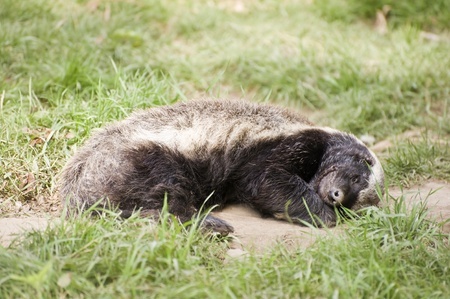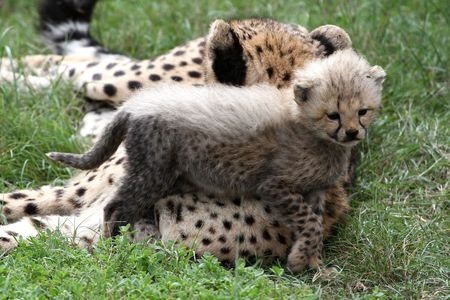Honey Badgers | Nonfiction Reading Test
What's fiercer than a lion but smaller than a beagle? The honey badger, one of the toughest mammals in Africa and western Asia. Honey badgers stand less than a foot high. They are only a couple feet long. They weigh just over 20 pounds. Yet they have a reputation for toughness that is far greater than their size. Some honey badgers will chase away lions and take their kills. I guess that goes to show you that size isn't the only thing that matters in a fight.

Honey Badgers can sleep off the effects of snake venom.
Honey badgers have long, sharp claws. These claws are good for attacking and even better for digging. Honey badgers are some of nature's most skilled diggers. They can dig a nine-foot tunnel into hard ground in about 10 minutes. They love to catch a meal by digging up the burrows of frogs, rodents, and cobras. They also use their digging skills to create their homes. They live in small chambers in the ground and defend them fiercely. They will attack horses, cows, and even water buffalo if they are foolish enough to poke around a honey badger's den.
You don't get a reputation like the honey badger by running from danger. The honey badger is fearless and a tireless fighter. They will attack any creature that threatens them, man included. Because of the honey badger's reputation, most predators avoid them. Some animals use the honey badger's rep to their advantage. Adult cheetahs have spotted coats, but their kittens have silver manes and look like honey badgers. Some scientists believe that their coloring tricks predators into avoiding them. Wouldn't you walk the other way if you saw a honey badger?

A cheetah kitten next to her mother
Beekeepers aren't the only people who have grown to hate honey badgers. Honey badgers may be fun to read about, but they are nasty neighbors. They attack chickens, livestock, and some say children, though they usually leave people alone. But if a honey badger moves in your backyard, there's not a whole lot that you can do about it. I mean, are you going to go and tangle with an animal that eats the bones of its prey? An animal with teeth strong enough to crunch through turtle shells? An animal that never tires, gives up, or backs down? Yeah, I wouldn't either...